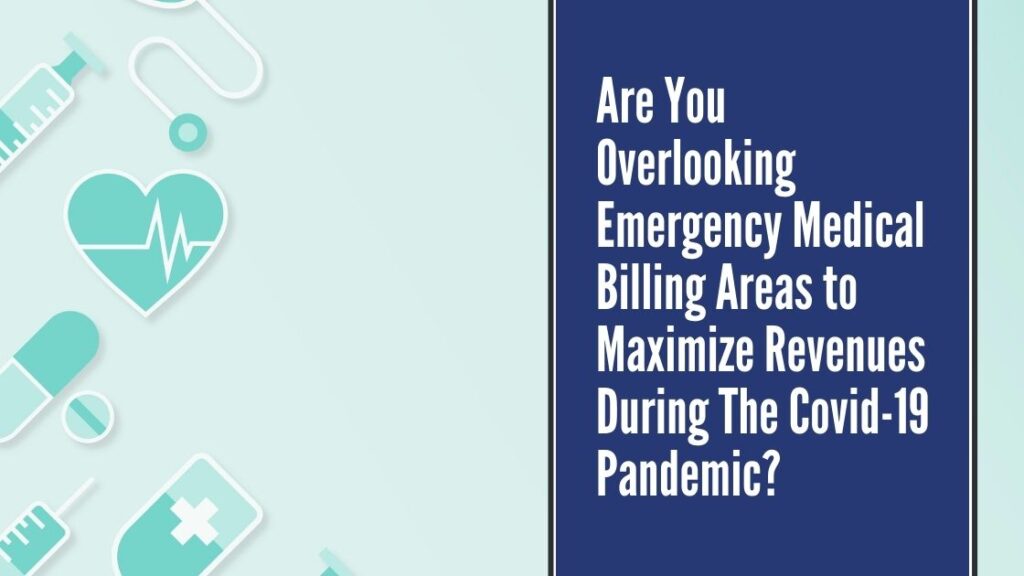
Although emergency departments are the first place where patients go when they are suspected of
covid-19, during this pandemic, we have seen that people avoid visiting the emergency department because
of the fear of the virus spread. This has caused a high decline in the emergency financial sector. Many
emergency departments are struggling financially due to the covid-19 pandemic.
Meds IT Nexus provides some of the best tips to ensure that emergency departments are not overlooking
innovative ways to generate more revenue during the pandemic.
Meds IT Nexus is the leading medical billing and coding company in the USA and has been working with
different medical emergency departments for years. Follow Meds IT Nexus medical billing consulting tips
and maximize your department’s revenue during this pandemic situation.
It often happens that the emergency departments unintentionally forget to report all diagnosis codes from the patient encounter. In many cases, codes are documented, but the sequencing is wrong. Experts suggest that one should always confirm the most emergency conditions as the primary diagnosis code. If the healthcare professional fails to document the diagnosis code, it could result in severe consequences. For example, the insurance company finds it challenging to accept whether the patient is in truly emergent condition. It could also affect how a healthcare professional calculates the decision-making.
If possible, try to avoid unspecified diagnosis. For example, if a patient has a fracture, the physician will need to document the proper location of the fracture. Therefore, one should not resort to unspecified diagnosis codes for such conditions.
Documentation is crucial for emergency departments. When emergency departments forget to document diagnosis codes, the department faces down-coded claims. When the insurance company sees that not enough codes are written, they downgrade level five E/M to level three. The average reimbursement difference between emergency departments codes 99283 and 99285 is $110. Therefore, slight mismanagement in documentation can be expensive. Hence, ED’s need to document codes thoroughly.
Most ED’s know that there has been a drastic change in patient benefits plans. Now, insurance providers pay less for emergency departments costs. Today, patients face deductible and coinsurance amounts. Now, emergency departments services are primarily at the mercy of healthcare professionals who collects patient’s information during registration. It is suggested by experts to verify if the patient has active insurance after the treatment is successful. Verify this before the patient checks out.
Submitting the claim doesn’t end the job. Experts suggest that you should follow up to make sure that the insurance provider pays you. Some payers take time to receive the claims; that’s why experienced professionals run aging reports at 60 days. It is costly to wait for the insurer to pay you. Hence, it is good if you have employees who work on claim follow-ups.
You should know that not every patient who claims to be a self-payer should pay that way. In some cases, patients qualify for Medicaid, yet they don’t know it. Billing uninsured patients and then trying to collect that payment causes issues. Therefore, it is worthy enough to check whether the patient qualifies for Medicaid or not.
As patients are responsible for emergency departments revenue, they should be allowed to pay with different options. For example, you can use a billing app to enable the patient to take a picture of the billing statement and then pay via mobile. In this way, the patient will not have to write a check or call someone to make the payment.
© MedsIT Nexus. All rights reserved 2024. Powered by MeshSq.